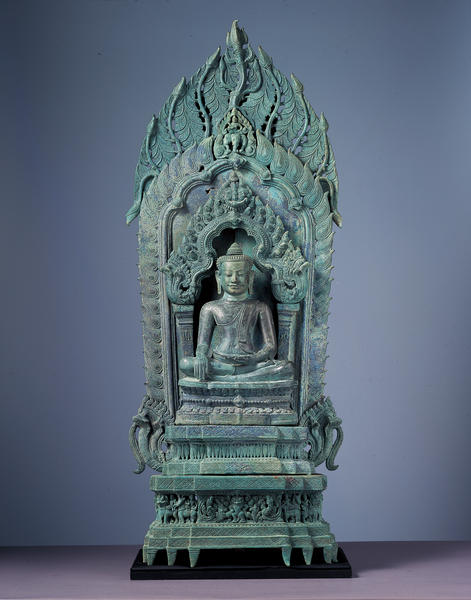Seated Buddha
- Cambodia, Bayon
- 12-13c
- Bronze
Catalogue Entry
This image of Sakyamuni Buddha has the legs folded in the full-lotus position, the right hand in the gesture of the “wish-granting mudra” (yogan-in) and the left hand in the “demon-subduing mudra” (goma-in). He wears a priest’s robe with the right shoulder bare. The head halo represents a legendary animal, makara, that, in this case, has a head at both edges. With stylized flames rising from the back, the makara spouts forth naga (cobra) from both sides. Attached to the top is the head of a kara monster that drives away evil. The heads of the makara are each supported by a square pillar, showing an architectural design. The “whole body” halo has a similar composition, but at its top is the god Indra sitting on three elephants keeping guard. Indra often appears in the decorations adorning the top of buddha alcoves during the Angkor period. A dynamic pipal tree rises over the whole body halo, representing the moment when the Buddha overcame demons and achieved enlightenment under the papal tree at Bodh-Gaya. The countenance of the Buddha in meditation with half-closed eyes has the mild, refined smile peculiar to works from the reign of Jayavarman VII, an ardent patron of Buddhism.
